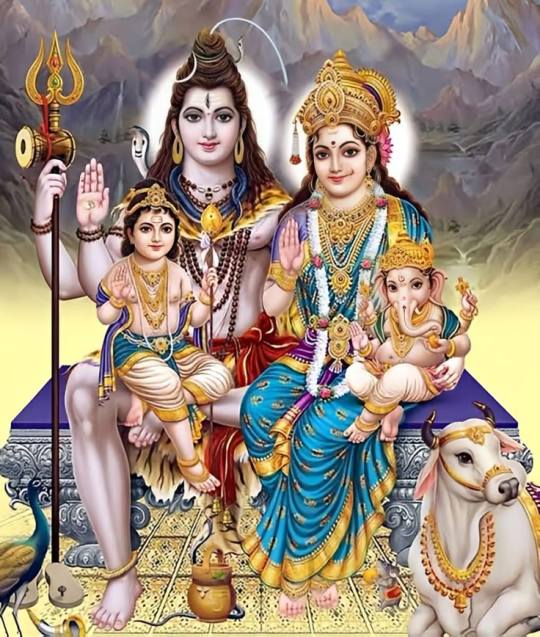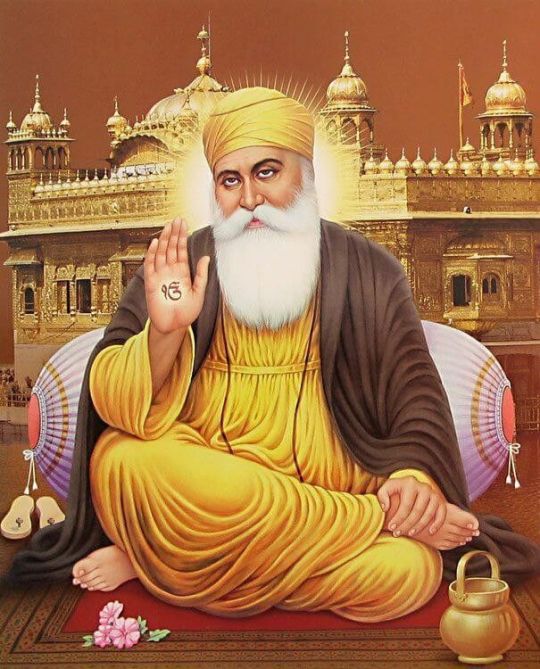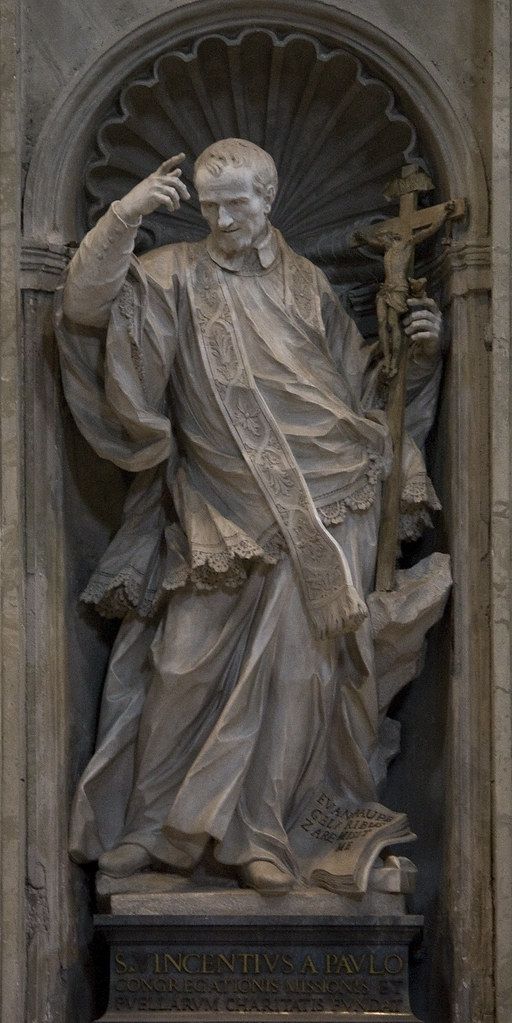#esoteric christianity
Explore tagged Tumblr posts
Text
The Universal Gesture of the Raised Right Hand












The raised right hand, a gesture seen across various religions, spiritual traditions, and artistic depictions, carries with it profound symbolic meaning. This ubiquitous gesture is often linked to themes of blessing, protection, authority, and enlightenment, and has been shown in the iconography of deities, spiritual leaders, and mystics for millennia. Its recurrence suggests it is more than just a physical movement; it embodies a universal archetype that is deeply ingrained in human consciousness. Through examining the gesture's origins, symbolism, and often suppressed meanings, we can gain profound insights into its role as a bridge between the material and the divine.
Core Symbolism Across Traditions
At its core, the raised right hand symbolizes reassurance and spiritual power. Across different traditions, it conveys a sense of divine protection, authority, and the dispelling of fear. In Hinduism and Buddhism, this gesture is epitomized in the Abhaya Mudra, which translates to “gesture of fearlessness.” The Buddha, often depicted with his right hand raised to shoulder height, palm outward, uses this gesture as a symbol of peace and protection, calming the fears of the devotee. Similarly, Hindu deities like Vishnu and Shiva adopt this mudra to bestow blessings and offer divine assurance.
Christian and Cross-Cultural Depictions
In Christianity, the gesture is closely associated with Jesus Christ, who is frequently depicted raising his right hand in a benediction, signifying the transmission of divine grace and spiritual power. Mary, too, is shown in similar contexts, her hand raised in a gesture of blessing. The raised right hand also carries significance in Sikhism, where Guru Nanak's gesture symbolizes divine truth and guidance. Even in occult traditions, figures such as Baphomet incorporate this gesture to represent the balance between the spiritual and material realms, echoing the principle of "as above, so below." The universality of this gesture underscores its association with spiritual authority across various cultures.
Esoteric Meaning and the Right-Hand Path
Beyond its religious and spiritual meanings, the raised right hand also has esoteric significance. It is often seen as a symbol of the "Right-Hand Path," a concept tied to righteousness, divine order, and enlightenment. This contrasts with the "Left-Hand Path," which is often associated with hidden knowledge or rebellion against established norms. This duality—light versus dark, order versus chaos—encapsulates humanity’s ongoing journey to balance material existence with spiritual transcendence.
Prehistoric and Ancient Origins
The origins of this sacred gesture stretch far back into prehistory. Before the advent of organized religion, prehistoric shamans—spiritual leaders adept at navigating altered states of consciousness—likely used the raised right hand as a nonverbal form of communication with higher realms. Cave paintings dating back over 30,000 years show figures with raised hands, suggesting a deep, intuitive connection between this posture and spiritual invocation. As civilizations emerged, this gesture became more formalized within religious and ceremonial contexts.
In ancient Sumer (around 4000 BCE), gods and rulers were often depicted with raised hands, invoking divine authority. Similarly, in ancient Egypt, deities like Osiris and Isis are frequently shown with their hands raised during sacred rituals. The Indus Valley Civilization (circa 2500 BCE) integrated mudras, symbolic hand gestures, into their early yogic practices. The Vedic texts (circa 1500 BCE) codified these hand gestures within Hindu rituals, associating them with the control of energy and blessings. Buddhism later adopted the Abhaya Mudra, as exemplified by the Buddha, who used it to calm a charging elephant sent by his cousin Devadatta, symbolizing serene power and protection.
An Archetype Across Cultures
Despite regional differences, the raised right hand has consistently symbolized divine connection across cultures. Its prevalence suggests an archetypal truth embedded in the collective human consciousness, one that spans time and geographical boundaries.
Esotericism and the Mystical Hand
In esoteric traditions such as Freemasonry and Hermeticism, the raised right hand goes beyond a simple gesture of blessing. It symbolizes the oath of initiation into higher knowledge, invoking cosmic truths that transcend ordinary understanding. The human hand itself is often viewed as a microcosm of divine creation, with its five fingers corresponding to the pentagram—a symbol of balance—and the five elements: earth, water, fire, air, and spirit. Ancient cultures believed that certain hand positions could channel energy flows within the body or invoke universal forces, further amplifying the significance of the raised right hand.
Duality and Balance in Symbolism
The duality inherent in this gesture reflects broader cosmic principles. The right hand is often associated with light, order, and divine authority, while the left hand is linked to chaos, hidden knowledge, or rebellion. This contrast is vividly illustrated in occult symbolism through figures like Baphomet, who is depicted with one hand pointing upward, toward the heavens, and the other pointing downward, toward the earth. Baphomet embodies the balance between opposites, serving as a reminder that spiritual enlightenment requires the reconciliation of dual forces.
Suppression of Esoteric Knowledge
Yet, beneath these surface meanings lies a deeper layer of significance, one that has often been suppressed or reinterpreted throughout history. Many cultures embraced the raised right hand as a sacred symbol, but its more esoteric meanings have often been obscured by religious institutions seeking to control spiritual knowledge. The myths surrounding pre-flood civilizations—such as Atlantis—speak of societies that possessed profound knowledge of sacred geometry, cosmic cycles, and spiritual science. This knowledge was likely lost or deliberately erased after catastrophic events reshaped human history.
Early Christianity, too, contained mystical teachings that were later suppressed by institutionalized religion. Gnostic texts describe Jesus as a teacher of self-mastery, rather than blind submission to external authority. Concepts such as reincarnation, which were central to early Christian thought, were removed from doctrine during Church councils. Similarly, the role of Mary Magdalene as an equal spiritual leader was diminished to reinforce patriarchal structures. These omissions serve to obscure Christianity's esoteric roots, favoring dogma over personal enlightenment.
Sound, Frequency, and Vibrational Truths
In addition to these religious suppressions, the science of sound and frequency also holds a key to understanding the deeper significance of the raised right hand. Ancient civilizations understood that sound shapes reality, a concept encoded in sacred languages like Sanskrit and Hebrew. The standard tuning of modern music (440 Hz) contrasts with ancient systems such as 432 Hz tuning, which is believed to harmonize with natural frequencies. This shift may represent a deliberate attempt to disrupt humanity's connection to higher vibrations, further distancing the masses from their spiritual potential.
The Moon and Frequency Control Theories
Some esoteric traditions even suggest that the Moon, with its perfect size for eclipses, may have been artificially placed in Earth's orbit as part of a control mechanism for human consciousness. Its presence raises questions about its origins and whether it serves as a frequency regulator, locking humanity into specific vibrational states.
Ultimately, the raised right hand represents more than just a symbolic gesture; it embodies humanity's shared spiritual heritage. Its presence across cultures suggests that it encodes universal truths about enlightenment: mastery over physical reality through alignment with cosmic laws, protection from ignorance, and guidance toward higher planes of existence. Yet, much of its deeper meaning remains hidden beneath layers of historical suppression and reinterpretation. By rediscovering these lost meanings—whether through ancient texts or modern esotericism—we can begin unlocking humanity's full potential for spiritual awakening.
The raised right hand, as a timeless and powerful gesture, continues to beckon us toward greater understanding and unity with the divine. It is a symbol that transcends time and culture, offering us an ancient key to uncovering the profound mysteries of the universe. Through it, we are reminded of our intrinsic connection to higher wisdom and the eternal quest for spiritual enlightenment.
#symbolism#iconography#sacred iconography#sacred symbols#mystical#mysticism#divine authority#mythical christianity#esoteric christianity#esoteric#occultism#occult#occult symbols#tradition#mudras#buddhism#buddhist#vedic wisdom#vedic#spiritual#spiritual protection#sacred geometry#hermetic#transcendentalism#gnosticism#gnostic teachings#gnosis#religious art#art history#mind over matter
105 notes
·
View notes
Text

"The Vision of the Cross"
Gustave Doré, 1832.
#esoteric christianity#orthodox christianity#christian mysticism#christianity#christian art#art#catholicism#catholic#catholic imagery#gustave doré
4K notes
·
View notes
Text
About God


These two quotes are the Truth. I became an atheist when I was 14 because I was questioning everything around me and saw that so-called "religious" people were as bigoted, if not more, than their atheist counterparts. I did not want to be part of any religion since religions are very dogmatic and totally kill your freedom of thought.
Thankfully, I discovered Gnosticism and I now better understand what it means to "believe" in God. To be with God... God is within you, not outside. You have to find Her/Him/It. If you are really serious about maturing spiritually, you should look for the first teachings of Christianity. The Saints very often recommended fasting, celibacy and solitude to reach God.
Do not read anything modern about Christianity because it is filled with dogma and prejudice. In other words : it has become fake. Modern Christians would be considered the Antichrist by early Christians, no kidding. The best examples are the famous pastors and their mega churches... They have private jets, expensive clothing, live in huge houses and have extramarital affairs yet claim to follow Jesus Christ when Jesus lived in total poverty (He depended on charity to live) and lived his whole life as a virgin...
Always trust your intuition and do not follow any mainstream religion. Once something is adopted by the masses, it becomes mediocre as it must adapt to the stupid crowd. And Christianity and Jesus' teachings are prime examples of that fact. The crowd is not enlightened so it makes sense that, to them, "believing in God" means fucking (within marriage for the ones who can contain their urges a bit more lol) and popping out a bunch of kids. These are animals wanting to appear virtuous and spiritual while remaining in their lower nature and not doing the work necessary to actually be spiritual. Growing spiritually is difficult and painful, and that is the reason why the majority will never even try to better themselves.

Religions < Atheism < Spirituality
#god#Be spiritual not religious#spirituality#sovereignty#esoteric christianity#christianity#Religions are stupid#From atheist to spiritual
40 notes
·
View notes
Text
Let us now consider the Divine Feminine Trinity of the Mother, the Daughter and the Holy Soul.
The Divine Mother is essentially the whole of creation, embracing all the stars, planets, Sun, Moon, the Earth, and all living creatures. Valentin Tomberg teaches that the heart of the Divine Mother is to be found in the center of the Earth and that the plant kingdom resonates with the very heartbeat of the Mother.
The Divine Daughter is the wisdom of the cosmos, pictured as the soul of the world embracing the entire cosmos extending from the realm of the fixed stars down to the planets and the Moon. This awe-inspiring image of Sophia as the world soul can be found in the Book of Revelation, where, as I mentioned earlier in the book, she is depicted as a woman clothed with the Sun, with the Moon under her feet, and upon her head a crown of twelve stars.
Between the Divine Mother in the center of the Earth and the Divine Daughter Sophia as the world soul, weaves the Holy Soul, the third aspect of the Divine Feminine Trinity. The Holy Soul is the creator of community, who ensouls and elevates groups of human beings in the progress of unfolding evolution. We find an example of this in the spiritual tradition of Israel that conceives of the Shekinah as the soul of the community of Israel. Here, Shekinah corresponds to the Holy Soul weaving between the Divine Daughter and the Divine Mother.
In this Sophia teaching of the Divine Feminine Trinity—Mother, Daughter, and Holy Soul—we reach the pinnacle of the Sophia tradition of Russia. This central teaching of the Divine Feminine Trinity will be a source of inspiration for seekers of divine wisdom in the coming ages, just as the teaching of the Holy Trinity—Father, Son, and Holy Spirit—has been a source of inspiration for Christians in ages past. Valentin Tomberg arrived at an extraordinary understanding of the Divine Feminine synthesized in these three persons—Mother, Daughter, and Holy Soul.
- The Sophia Teachings by Robert Powell
(An interesting excerpt I found. Personally, I still subscribe to the Filianic belief that the Mother is the transcendent creatrix, rather than creation itself, and I see the Daughter as the world soul and divine presence within all living things).
31 notes
·
View notes
Text

Śrīkālasaṁkarṣiṇī represents the very power of Cit, consciousness, to draw all phenomena back into itself. Her name, which means “the one who draws in or absorbs time,” speaks to her role not just as a destroyer, but as the devourer of illusion, the terminus of all karmic cycles, and the supreme feminine principle who alone can reveal the highest Self. She is Kālī, but in her most esoteric Shaiva form..less anthropomorphic, more like a force of sheer Svātantrya, or divine autonomy.
She is the very ground of liberation, a current that calls the practitioner inward to the deepest heart of consciousness, where duality dissolves. Her fierce grace is not chaotic or random...it is precise and purifying. In her presence, all temporal identities collapse. She unveils the one eternal identity that has always been: Aham, the I-consciousness, the divine "I am" of Śiva, not as something to be believed, but as something to be known, directly and bodily.
While I am a nondual mystic whose metaphysical orientation most closely aligns with Kashmir Shaivism and nondual Tantra, I engage with Christian mysticism and Abrahamic doctrine through this lens. From this perspective, Christ is not the son of God in the sense of being the only incarnation of divinity or the sole bearer of divine essence, but rather the one who fully realizes the truth of Svātantrya..divine autonomy - through Pratyabhijñā, the direct recognition that there is no separation between God and Self. The Christ becomes an archetype of the liberated being, a mirror for the process of self-recognition inherent to all.
In esoteric Christianity, the Virgin Mary is not merely a historical figure or maternal archetype, but a cosmic vessel of divine light, the Theotokos, the God-bearer. She does not just give birth to Christ externally; in the mystical imagination, she is the soul’s mother who births the Logos within the heart of the devotee. She is seen as the perfect receptacle of divine will..immaculate not merely in sinlessness, but in total openness to divine purpose. Her compassion is fierce, her purity a kind of luminous fire that prepares the soul to be wed to the divine.
Yet Mary alone is not the full picture. Christ, in his esoteric expression, becomes the Logos, the liberating gnosis, the embodied truth that awakens the soul from death and reunites it with the source. He descends into the underworld not only to conquer hell in a theological sense, but to retrieve the soul from the depths of illusion - just as Śrīkālasaṁkarṣiṇī does when she swallows time and illusion to reveal the eternally unbound Self.
When viewed through the tantric lens, these roles converge in Śrīkālasaṁkarṣiṇī. She is the mother who births the Self, like Mary. She is the liberator who shatters all bonds, like Christ. But she is more than their sum..she is the very power by which such manifestations are possible. In Tantra, the Divine Feminine is not passive or secondary. She is primary. She is both the substratum and the revelation. There is no liberation without her.
From this nondual understanding, the Christian Trinity finds deep resonance with the Trika foundation of Kashmir Shaivism. The Father reflects Paraśiva..the transcendent, formless Godhead beyond all attributes. The Son, like the realized individual in Trika, represents the embodiment of Cit that has awakened to itself. And the Holy Spirit..as the divine breath or inspiriting power - parallels Śaktipāta, the descent of grace, the Shakti that initiates recognition and transformation.
In Kashmir Shaivism, the process of liberation is not one of mere belief or faith, but of direct experience..Pratyabhijñā, recognition. It is to awaken as Cit, and this awakening is not cold or abstract - it is fiery, intimate, embodied. It comes as the kiss of Bhairavī, the cutting glance of Kālī, the soft explosion of the Spanda, the subtle pulse of awareness that underlies all movement. And Śrīkālasaṁkarṣiṇī is the great initiatrix into this fire of realization.
The Christian mystic may look to Mary for comfort and Christ for liberation. But the tantric, realizing no separation between God and Self, looks to Śrīkālasaṁkarṣiṇī to dissolve the final veil and grant the lived knowing of Svātantrya - the freedom to create, dissolve, and abide in one's own infinite being.
Thus, she is at once the womb of God, the destroyer of illusion, and the bestower of absolute sovereignty.
Aiṁ Hrīṁ Klīṁ Cāmuṇḍāyai Vicce
Om Kreem Mahakalikayai Namah
#esoteric#occult#hinduism#tantra#shiva#goddess#shakti#bhairava#spirituality#sanatanadharma#esoteric christianity#gnostic christianity#christian mysticism
13 notes
·
View notes
Text

It is important to understand that real knowledge is of the heart. Real wisdom is what we live. Real knowledge comes from experience, and more importantly, that experience of higher realities comes when we investigate our own heart, our own mind, our ways of living, and to look, not to assume that we know, “I am of this race, this culture, this religion, this belief system, these politics, this upbringing.” It means to really look at what is inside in terms of our emotions, our impulses, our will.
This active looking is precisely what every tradition teaches about meditation: to look, to observe, to acquire new information―not to assume that we already know who we are, but to be open and to watch in a state of stillness, of observation, of clarity. It is that inner discrimination of ourselves that really helps us to distinguish right from wrong. It is our heart, our conscience, that tells us what is right and what is wrong. We may have traditions that tell us these things, but what do we know in our being about what to do? ― especially when we are faced with situations that are so complex that we are baffled. We are confused. We are overwhelmed, like you heard in Carmina Burana. When fate hits, the hammer of karma, of hardship, strikes, and we find all of those things that we typically ignore come to the surface of our mind, things we may neglect or fail to look at.
New Lecture Transcription!
#blavatsky#spirituality#gnosticism#gnosis#gnostic#chicago gnosis#samael aun weor#gnostic tradition#gnostical#gnostics#gnostic teachings#gnostic christianity#chicago gnosis podcast#gnostic academy of chicago#esoteric christianity#esoteric knowledge#voice of the silence#awakening#consciousness#meditation#religion#christian faith#jesus christ#christianity#spiritual#spiritual enlightenment#spiritual growth#spiritual awakening#spiritual journey#spiritual life
40 notes
·
View notes
Text
"Who is the Holy Mother?
She is the personification of the upper Shekinah and primordial Wisdom. She is the speaking silence of the heavenly voice uttering the Word of Life, and so she, herself, is the Life and the Light of the world, inseparable from the Holy One who has come from within herself as the matrix of Creation.
Who is the Mother of God but God herself?"
- Tau Malachi*
*yeah I know I have issues with this guy but sometimes he hits the mark
#divine feminine#holy mother#heavenly mother#mother god#esoteric christianity#christopaganism#lady sophia#déanism#filianism#collyridianism
8 notes
·
View notes
Text
Mother Mary altar ideas










#christian witch#christopagan#christopaganism#folk catholicism#christian witchcraft#christopagan witch#folk christianity#witchblr#theotokos#mother mary#esoteric christianity
50 notes
·
View notes
Text
“Always Doubt Those In Power”
Why are the Gnostics considered heretics?
Why are they demonized by the church?
It’s because they told the truth.
This world is ruled over by a demiurge,
The Old Testament God.
And Christ was sent to free us from him
and make us one with the True God,
The Absolute
The One all things emanate from
And that all things reside in.
Read from the Nag Hammadi Library.
Why are we taught to hate the communists?
Even more than the fascists?
Because Amerikkka is a fascist imperialist state
built on exploiting its own labor
As well as that of the Global South.
That’s capitalism, baby.
But the point is always to be curious.
Always doubt those in power.
And to challenge the powers that be.
3 notes
·
View notes
Text

The Sermon on the Mount by Carl Bloch (1877)
“The level above Man is called the Kingdom of Heaven or Kingdom of God in the Gospels. It has many other names in different writings. In the Gospels, it is said that the Kingdom of Heaven is within. It is at a higher level of a man. To reach it, a man must reach a higher level in himself. If everyone did this, the level of life on this earth would change.”
~ Maurice Nicoll, The New Man
4 notes
·
View notes
Text
Even when I don't feel a special sympathy towards Christianity, I've to admit Jesus seems one of the few magicians that effectively —probably more effectively than anyone before and after him—achieved the goal of reaching the status of divinity/being one with the Gods— he did not only turned himself into a living God, but was —and still is— recognized as one by all for it (ok, yeah, both the curation of textual sources for New Testament to avoid the magical stuff and St. Paul helped a lot, but you know)
#esoteric christianity#jesus#jesus the magician#also literally bainchôôôch#one of the triple powered gods#descended to jesus
28 notes
·
View notes
Text

The Logos and the Cosmic Christ Understanding Christ as the Eternal Word
"In the beginning was the Word, and the Word was with God, and the Word was God." — John 1:1
What is the Logos?
The term Logos (λόγος) is more than just a poetic flourish. In ancient Greek, it denotes word, reason, principle, or divine logic. For early Christians, particularly those rooted in the Hellenistic world, this concept was a bridge, uniting Jewish monotheism with Greek philosophical tradition.
In Jewish wisdom literature, the Word of God is often portrayed as the active agent of creation. Psalm 33:6 declares, "By the word of the Lord the heavens were made." This Word, this Logos, becomes personified in the prologue of John's Gospel, revealing not only the creative force of God but a divine personhood that existed before time began.
This was not a new idea pulled from thin air, but rather a profound unveiling: that the same Word which spoke creation into existence is the same Christ who walked among us.
Logos as the Blueprint of Creation
The Logos is the divine pattern behind all things. In esoteric thought, it serves as the archetypal structure upon which creation rests. Think of it like sacred geometry: just as Metatron’s Cube maps out universal order in symbolic form, so too the Logos forms the spiritual architecture of the cosmos.
Saint Maximus the Confessor described this beautifully: all created things have their own logoi—individual expressions or ideas within the overarching Logos. When you witness beauty, truth, or harmony in the world, you’re glimpsing a reflection of that Divine Mind.
This is why Christ is called the firstborn of all creation (Colossians 1:15). Not because He was created, but because He is the origin and measure of creation. Everything that exists flows from and finds its meaning in Him.
The Cosmic Christ
To speak of the Cosmic Christ is to acknowledge that Christ's identity transcends time and geography. Before Jesus of Nazareth was born, the Logos already was. He is not confined to one age or culture, He is the Eternal Son, present at the dawn of creation and active even now.
This idea finds resonance in the early church and Eastern Orthodox mysticism. Christ is the Divine Bridge, uniting heaven and earth, spirit and matter. He is both immanent and transcendent. The Logos sustains the universe, yet also desires to dwell within the human soul.
Saint Athanasius wrote, "He became man so that we might become god." This wasn’t meant in a blasphemous sense, but rather points to Theosis, our transformation and union with the divine, made possible only through the eternal Logos.
The Logos Within
We are not separate from this divine story. The Logos is not just a cosmic force; it is alive and seeks to awaken within each of us.
When you pursue truth, beauty, and goodness with a sincere heart, you are walking the path of the Logos. When you quiet your mind and sense a deeper rhythm beneath the noise of the world, that still, eternal presence, that is Christ the Word whispering within.
In Orthodox Christian mysticism, this awareness leads to hesychia, stillness, where the soul communes with God beyond words. The heart becomes the dwelling place of the Logos, and the believer becomes a living temple of divine order.
Christ and the Axis Mundi
In esoteric traditions, the Axis Mundi is the sacred center, the point where heaven and earth connect. Christ is this Axis. He is the ladder Jacob saw in his dream. He is the Tree of Life. The Cross itself becomes a cosmic symbol: its vertical beam uniting heaven and earth, its horizontal beam embracing all of creation.
To understand Christ as Logos is to understand this cosmic centrality, that all things find their meaning in Him, and through Him all things are restored.
Conclusion
The Logos is not just an idea, it is the Person of Christ, eternal, active, and foundational to reality itself. Through Him, we were created. In Him, we are sustained. And by Him, we are invited back into communion with God.
As you continue your inner journey, remember: this is not abstract theology. This is the breath of life, the reason behind the stars, and the Word that became flesh for you.
📚 Sources & Suggested Reading
The Holy Bible, John 1:1-14; Colossians 1:15-20; Proverbs 8; Psalm 33:6 On the Cosmic Mystery of Jesus Christ – St. Maximus the Confessor On the Incarnation – St. Athanasius The Mystical Theology of the Eastern Church – Vladimir Lossky Jesus Christ: The Bearer of the Water of Life (Pontifical Council for Culture, 2003) The Universal Christ – Richard Rohr (use with discernment; not Orthodox, but helpful for grasping Cosmic Christ ideas) Light from Light: A Theological Reflection on the Nicene Creed – Robert Barron
#christian blog#christian faith#religion#christianity#religionblr#studyblr#esoteric#christian mysticism#esoterist#esoteric christianity#religious study#bible study#gnostic christianity#early christianity#education#education blog
13 notes
·
View notes
Text

A veiled Carmelite nun.
#christian#christianity#orthodox christianity#orthodox#catholic#Catholicism#nun#Christian nun#christian mysticism#mysticism#gnosticism#esoteric#esoteric christianity#carmelites#carmelite
930 notes
·
View notes
Text

This perfectly describes what Christianity is REALLY about : finding and developing the Light / the Christ within yourself. This stems from anagogia, which is the interpretation of a word, passage, or text (as of Scripture or poetry) that finds beyond the literal, allegorical, and moral senses a fourth and ultimate spiritual or mystical sense. Jesus was never meant to be worshipped, He was a Yogi / Saint who taught his followers the way to reach God ! He never expected people to worship Him ❤️ Only worship the God that is within your own self, nothing else. God is not outside of you, It is inside.



19 notes
·
View notes
Text
Someone: Any plans for New Years Eve?
Me: Yes....
What just arrived in the post:

#the first physical copy I've got#crazy right?#but everyone says KK is the definitive one and there's no kindle version#mary magdalene#holy daughter#gnosticism#esoteric christianity#divine feminine
22 notes
·
View notes
Text
The Mystery of the Cathedrals by Fulcanelli (book reading)
youtube
In Le Mystère des Cathédrales, Fulcanelli presents a thesis: that the Gothic cathedrals of Europe, particularly Notre-Dame de Paris, are not merely religious monuments, but repositories of secret knowledge… living books in stone authored by initiates of the Hermetic tradition.
These structures are not only spiritual houses but alchemical vessels/athanors… whose architecture, sculpture, and iconography encode the steps of the Magnum Opus or the alchemical process of transformation, both material and spiritual.
According to Fulcanelli, the master builders—compagnons, who worked in tightly guarded guilds—had encoded this knowledge in what he called the “language of the birds,” a symbolic, phonetic language known to alchemists, troubadours, and mystics.
On the facade of a cathedral, seemingly grotesque figures—green men, dragons, chimeras—alongside saints and angels, do not merely serve decorative or didactic functions.
Instead, they diagram the secrets of cosmic forces: dissolution and coagulation, fire and water, mercury and sulfur, spirit and matter.
Fulcanelli shows that these medieval craftsmen were transmitting sacred science hidden behind the cloak of Christianity, drawing from a perennial tradition that reaches back to ancient Egypt, Hermetic Alexandria, and the Gnostic sects of the early Christian era.
What fascinates many about Fulcanelli’s work is the lore surrounding his later life—or disappearance.
In 1937, years after the publication of Le Mystère des Cathédrales, Jacques Bergier, a chemical engineer and intelligence operative, claimed to have met Fulcanelli in a clandestine meeting in Paris. There, Fulcanelli allegedly warned him about the imminent dangers of atomic energy, stating that nuclear transmutation—the very dream of alchemy—was not only real, but on the verge of being weaponized.
According to Bergier’s account, Fulcanelli claimed that certain passages in ancient alchemical texts contained the formulas for manipulating matter at its most fundamental levels, and that the cathedrals themselves symbolically encoded this knowledge. The philosopher’s stone, then, was not a quaint legend or spiritual metaphor—it was a cipher for the same atomic fire unleashed in Hiroshima and Nagasaki.
This intersection of nuclear physics and esoteric knowledge is not as far-fetched as it might seem. The dream of alchemy was always about transmutation… changing the nature of matter itself.
In that sense, nuclear fission is the grim fulfillment of the Great Work, torn from its spiritual context and weaponized by a world unprepared for its implications.
Fulcanelli’s alleged prophetic warning finds a dark mirror in the figure of J. Robert Oppenheimer, the “father of the atomic bomb.” After witnessing the detonation at the Trinity site in 1945, Oppenheimer famously recalled the Bhagavad Gita.
This was his parallel or image of the cry of a modern Arjuna, one who realizes too late the metaphysical weight of the weapon he has unleashed.
In the Gita, this phrase comes during a vision of Krishna’s universal form—terrible, divine, and beyond comprehension. It is the moment when mortal man is confronted with Brahman in its aspect of destruction and regeneration. Oppenheimer’s oft-quoted line—“Now I am become Death, the destroyer of worlds”—is a poetic paraphrase of Krishna’s actual words: “I am Time (Kāla), the destroyer of worlds.” The shift from Time to Death narrows the scope from cosmic inevitability to personal reckoning, transforming a revelation of universal order into a reflection of human guilt and dread.
Oppenheimer, like Fulcanelli, was not merely a scientist, but a mystic in crisis. The Trinity explosion became a real-world reenactment of the cosmic war of the Mahabharata, wherein divine weapons (astras)—capable of annihilating entire cities—were used in a karmic drama far beyond the comprehension of their wielders. One could argue the Manhattan Project was a modern Kurukshetra, but without Krishna’s guidance… just cold calculation, split atoms, and shattered ethics.
This reframes the cathedral entirely. If the great cathedrals are stone repositories of esoteric science, then they also carry warnings. Gargoyles and grotesques, long thought to be moral lessons about sin, may represent the monstrous consequences of misused knowledge. The Virgin Mary—whom Fulcanelli links to the prima materia—becomes not only the womb of Christ but of the philosopher’s stone, the container of volatile potential.
And Christ’s resurrection is no longer just theological… it is the symbolic promise of coagula, the spiritual rebirth that must follow the destruction of form.
Fulcanelli’s work suggests that true alchemy was never about literal gold, but about balancing opposing forces—spirit and matter, inner and outer, fire and form.
The failure to do this, he warns, leads not to enlightenment but to annihilation. In that light, the atomic bomb is a fallen philosopher’s stone: the triumph of the outer operation without inner illumination.
The cathedrals, by contrast, are temples of integration.
Esoteric Christianity, as Fulcanelli outlines through architecture, is not a faith of blind belief but a path of hidden initiation. It is a mystery religion in the true sense: veiling the highest truths within the forms of tradition, liturgy, and symbol.
The crucifixion becomes the nigredo of the soul’s descent into matter; the resurrection, the albedo and rubedo—the luminous rebirth of the spirit.
#esoteric#occult#gnosis#catholic#easter#alchemy#spirituality#religion#esoteric christianity#christian mysticism#rosicrucian#hermetic#mystery religion#Youtube
3 notes
·
View notes